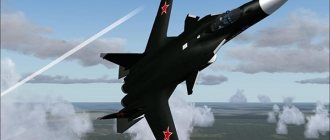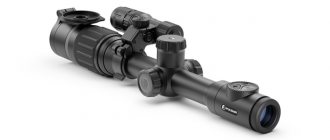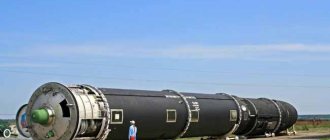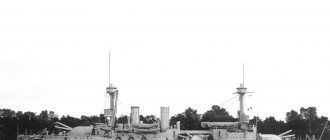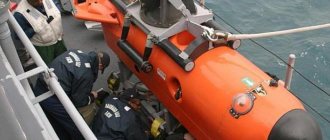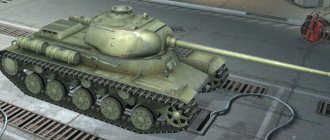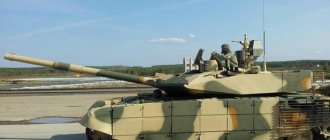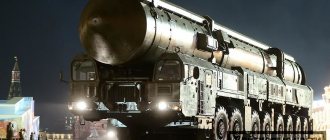A fundamentally new fighter
Photo: Rostec
The main and most intriguing new product of MAKS 2021 was a fundamentally new fighter, the presentation of which took place on the opening day of the salon - July 20. While there is no official information about the car, commentators are putting forward exotic hypotheses: from a UFO to a drone. Judging by the pictures from Zhukovsky airport that appeared on social networks, it can be assumed that we will be shown a smaller version of the stealth fifth-generation fighter with one engine - it was known in advance that the Sukhoi Design Bureau was working on such a machine.
MS-21-310
A real sensation in the civil aviation sector is the medium-range MS-21. This is a short- and medium-haul aircraft. The high performance characteristics of the MC-21-300/310 aircraft are achieved thanks to advanced aerodynamics, engines and latest generation systems. Improved aerodynamic characteristics are provided by a higher aspect ratio wing made of polymer composite materials. The widest fuselage in its aircraft class (4.06 meters) improves comfort for passengers and crew. The capacity of the MC-21-300/310 aircraft is from 163 to 211 passengers. Flight range is up to 6,000 km.
The new Russian aircraft can become a real competitor to the best airliners from Airbus and Boeing. On July 7, an experienced MS-21-310, equipped with PD-14 engines, arrived in Zhukovsky to continue testing. At MAKS 2021, for the first time, it can be seen not only in the parking lot, as at MAKS 2019, but also in the air.
Su-35
Ultra-maneuverable multi-role fighter of the 4++ generation. One of the main aircraft of this type in the Russian Air Force. Produced by modernizing the Su-27. The differences in design with the prototype are as follows: a reinforced airframe, no brake flap and no front horizontal tail. Armament of the Su-35: aircraft cannon and 150 shells, medium-range air-to-air missiles - up to 14, short-range - 6 and long-range 4. It is armed with anti-ship air-to-ground missiles, precision-guided and unguided munitions.
IL-114-300
The IL-114-300 became one of the sensations of 2022. True, the sensation is somewhat belated. The aircraft was designed, fully tested and even put into production back in the USSR. At MAKS 2021, a completely new, completely modernized version of the Soviet prototype will be presented.
Il-114 is a short-haul turboprop aircraft created to replace the An-24 and Tu-134. One of its advantages is the ability to operate from short runways, including in Arctic latitudes. The aircraft is also adapted to poorly equipped airfields: it has a built-in stairway and is capable of starting engines without assistance. It is already known that the aircraft has prospects not only in civil, but also in military aviation - based on the Il-114-300, a new naval reconnaissance aircraft may be created in the future, which will be used to search for submarines and surface ships.
Division by speed
In addition to the classification of aircraft by purpose, which we studied in detail above, there are other types of ranking. These include classification by flight speed. Based on this criterion, aircraft are divided into the following categories: subsonic, transonic aircraft, supersonic aircraft and hypersonic.
It is not difficult to understand that subsonic aircraft move slower than sound. Transonic aircraft fly at speeds close to the sound barrier, supersonic ones break the sound barrier, and hypersonic ones exceed this figure by more than five times.
At the moment, the experimental hypersonic vehicle from the USA X-43A 2001 is considered the fastest in the world. It can reach a speed of 11,200 km/h. In second place is his compatriot X-15, released back in 1959. The speed is 7273 km/h. If we talk not about experimental devices, but about those aircraft that perform specific tasks, then the American SR-71, capable of reaching speeds of up to 3530 km/h, takes the lead. Among domestic aircraft, the supersonic MiG-25 should be highlighted. Its maximum speed can reach 3000 km/h.
In passenger aviation, things are much worse with speed. To date, only two supersonic airliners have been produced: the domestic Tu-144 (1968) and the French-English Concorde (1969). The first of them can reach speeds of up to 2.5 thousand km/h, which is a civil aviation record, but among aircraft of all purposes this is only the tenth place. It should also be noted that at the moment there is not a single supersonic airliner that is in operation, since the use of the Tu-144 was abandoned back in 1978, and the use of the Concorde was stopped in 2003.
Hypersonic passenger aircraft never existed at all. True, there are now several projects from both domestic and foreign design bureaus for the production of a hypersonic airliner. Among them, the most famous is the European ZEHST. This aircraft will be capable of reaching speeds of up to 5.0 thousand km/h, but the timing of its creation is unclear. There are two similar projects in Russia - Tu-244 and Tu-444, but at the moment both of them are frozen.
Il-112V
Another novelty of the international aviation and space salon was the military transport Il-112V. This is the first military transporter that was created from scratch in Russia after the collapse of the USSR. They plan to use it to transport paratroopers, weapons, and military equipment. Maximum cargo weight is five tons. The aircraft's cruising speed is 470 kilometers per hour, and its flight range is 1.2 thousand kilometers.
After the first flight, which took place in 2022, the Ministry of Defense made a number of comments. The main thing concerned the excessive weight of the aircraft. Over the past time, the designers have carried out a number of measures to reduce the weight of the vehicle: they changed the design of the cargo hatch, replaced some of the metal parts with composite ones, and modified the chassis. Visitors to MAKS 2021 will be among the first to see the updated Il-112V.
How are airplanes classified?
First of all, let's find out what types of planes there are. The names of aircraft can tell a lot, but the classification will tell us even more. How are aircraft classified? This is done according to the following parameters:
- by appointment;
- speed;
- number of engines;
- engine type;
- chassis type;
- weight;
- number of wings;
- fuselage size;
- type of management;
- takeoff form.
We will now dwell on some of the above points in more detail.
LMS-901 "Baikal"
LMS-901 "Baikal". Photo: screenshot/youtube.com
A prototype of the LMS-901 “Baikal” aircraft was demonstrated in Zhukovsky. This aircraft is expected to become the successor to the legendary An-2 on local airlines. Important conditions for the project were the use of domestic components and assemblies, high maintainability in local conditions and cost-effectiveness.
Model of the supersonic passenger aircraft "Strizh"
Experimental study of a model of a passenger supersonic aircraft in the TsAGI wind tunnel. Photo: https://www.tsagi.ru/
The list continues with one of the experimental developments of the Central Aerohydrodynamic Institute named after Professor N.E. Zhukovsky is a model of a technology demonstrator for the supersonic civil aircraft "Strizh". Its layout has a low level of sonic boom while ensuring high aerodynamic characteristics, stability and controllability over the entire range of flight modes. It’s a must to see a futuristic model of a civil aircraft, reflecting the latest developments of Russian scientists and designers.
Yak-40LL with a hybrid power plant
Another experimental novelty is a flying laboratory based on the Yak-40, which will be presented by the Baranov Central Institute of Aviation Engine Engineering. On board the Yak-40LL there is a demonstrator of a hybrid power plant with a superconducting electric motor. This is the world's first power plant of this class. An electric motor with a power of 500 kW drives a propeller installed in the nose of the aircraft. In this case, the electric motor is combined with a gas turbine. The first is responsible for takeoff and acceleration, the second, being the main source of energy for the electric motor, ensures flight.
Mi-8AMTSH-VN
Photo: Vitaly Ankov/RIA Novosti
The newest transport and combat helicopter Mi-8AMTSH-VN is also shown for the first time. This is the most modern version of the legendary multi-purpose helicopter, developed taking into account the experience of recent local conflicts, including the operation in Syria. The vehicle received a VK-2005-03 engine, which operates reliably in hot climates, the cockpit was protected with titanium plates, and the protection of the transport compartment was reinforced with light aramid armor. The helicopter's armament is reinforced with cannons in suspended containers, machine guns, guided and unguided missiles. Due to its high firepower, the updated Mi-8 is called a “flying airborne combat vehicle.”
Turboprop combat aircraft as an alternative to UAVs for third world countries
Currently, the air forces of a number of countries operate light turboprop attack aircraft, which are primarily designed to intercept light aircraft, patrol borders, and combat various kinds of insurgent movements and illegal armed groups.
The desire to reduce development and operational costs has led to the fact that the bulk of currently used counterinsurgency aircraft are based on two-seat trainers or even agricultural vehicles. Such light attack aircraft are comparable or even superior (in counterinsurgency operations) to combat helicopters in combat effectiveness. Turboprop attack aircraft demonstrate better combat survivability than rotorcraft. An indisputable fact is that a turboprop aircraft has a higher flight speed, is more difficult to hit from a rapid-fire anti-aircraft gun, and can quickly leave the fire zone. The aircraft does not have such highly vulnerable elements as a tail boom with a tail rotor and a main rotor, which means that with an equal level of protection, the aircraft will have better combat survivability. In most cases, due to design features, a light turboprop combat aircraft emits a smaller heat signature compared to a helicopter equipped with a propulsion system of similar power. This circumstance is directly related to the probability of being hit by missiles with thermal homing heads.
When choosing turboprop attack aircraft, many Third World countries were guided by the “cost-effectiveness” criterion. Although helicopters are capable of being based on “pockets”, and small aircraft require a runway several hundred meters long, the cost of one flight hour of a light combat aircraft with a turboprop engine is several times less than that of an attack helicopter capable of carrying the same combat load that more than pays for the costs of building field airfields. Of no small importance are the duration and labor costs when preparing for a second combat mission. In this regard, attack aircraft built on the basis of training equipment or agricultural aircraft are the undisputed leaders. Due to their higher fuel efficiency, turboprop aircraft can stay in the air much longer and are better suited for reconnaissance, patrol and search-and-strike missions.
Comparing turboprop combat aircraft with jet attack aircraft, one can expect a speed of 500-600 km/h; in the absence of external target designation, there is often not enough time for visual target detection (taking into account the pilot’s reaction). With a larger “payload”, jet attack aircraft, created to fight armored vehicles and destroy fortified positions in the “big war”, acting against various kinds of insurgents, often spend it irrationally. In this case, the analogy with a sledgehammer and a hammer is appropriate. With certain skill, small nails can be driven in with a sledgehammer, but a hammer is much better suited for this.
Hopes that remotely piloted aircraft would replace combat aircraft during counterinsurgency operations turned out to be unfounded. UAVs (in the absence of the enemy's developed air defense) are excellent for observation, reconnaissance and conducting targeted strikes. It is known that during combat missions, the American attack MQ-1 Predator and MQ-9 Reaper, as a rule, carried no more than two AGM-114 Hellfire guided missiles. The increased ammunition on board the drone seriously limited the flight duration. There are cases when, in order to destroy a “hard” target detected by the operator of an unmanned vehicle, it was necessary to call in manned combat aircraft or drones equipped with adjustable 227-kg GBU-12 Paveway II aerial bombs. Due to the limited number of weapons on board, unlike a manned attack aircraft, a drone is physically unable to “press down” with fire and fetter the actions of a large group of militants carrying out an attack on a checkpoint or support base in a remote area. UAVs are more reconnaissance and surveillance tools and, in terms of their strike potential during counter-insurgency operations, cannot yet be compared with manned aircraft. In addition, any large production drone equipped with aviation weapons, for all its advantages, is seriously inferior to a turboprop attack aircraft in flight speed, vertical and horizontal maneuverability. Due to the desire to make the drone extremely light, its airframe has less strength, which is the reason for the UAV’s inability to perform sharp anti-aircraft maneuvers. Combined with the camera's narrow field of view and significant response time to commands, this makes them very vulnerable to fire and sensitive to even minor damage.
However, the main difficulties in creating a truly effective reconnaissance and strike remotely controlled aircraft are for the most part not related to the airframe and propulsion system, but to the possibility of using advanced remote control and data transmission systems. For example, Russia has not yet adopted a drone that would have the same capabilities as the American Reaper or Predator. It is known that the United States has a global control system for drones via satellite channels. The main management of the actions of American unmanned hunters in any part of the world is carried out by operators located at Creech Air Force Base in Nevada.
MQ-9A Reaper UAV on the runway at Creech Air Base.
A similar Chinese facility is located at Anshun Air Base in Guizhou Province.
The main control center for the UAV and satellite communications station are located here. The lack of satellite channels limits the combat radius of unmanned combat aircraft, which forces the use of another UAV to relay radio signals, or place the antennas of control points on high masts and natural hills. In addition, the American authorities impose serious restrictions on the supply of combat drones and control systems, and even the closest US allies cannot always purchase them, and much cheaper Chinese analogues are still inferior to products from General Atomics Aeronautical Systems. Under these conditions and taking into account the shortcomings of RPVs, the command of the Air Forces of many small and not very rich states chooses light turboprop combat aircraft, albeit not so high-tech, but much easier to use.
As mentioned in the previous part of the review, during the combat use of the widespread EMB-314 Super Tucano turboprop attack aircraft, they were very often equipped with guided aircraft munitions, which can be used beyond the range of effective anti-aircraft fire, which avoids losses.
This approach was implemented in the creation of the AC-208B Combat Caravan reconnaissance and strike aircraft, which was designed by Orbital ATK Inc. in 2009 on the basis of the light turboprop transport and passenger Cessna 208 Caravan. For surveillance and armed reconnaissance, the aircraft is equipped with the L3 Wescam MX-15D optoelectronic system, which includes: a high-resolution daytime color TV camera, a night-time IR camera, a laser rangefinder-target designator, color LCD displays and a computer complex for the weapons control system. On board there is also equipment for digital data transmission to ground points and other aircraft connected to the combat control system, an AAR-47/ALE-4 on-board jamming system, an AN/AAR-60 enemy missile launch warning system, radio stations and equipment navigation. Laser equipment is also provided, which in automatic mode is capable of blinding the IR seeker of MANPADS missiles, but the aircraft were not delivered to the customer in this configuration. The US government has allocated $65.3 million to purchase five AC-208Bs for the Iraqi Air Force. This amount also includes the cost of purchasing spare parts and training specialists.
Iraqi Air Force AC-208B Combat Caravan
The aircraft with a maximum take-off weight of 3629 kg is equipped with a Pratt & Whitney PT6A-114A turboprop engine with a power of 675 hp. With. Maximum flight speed is 352 km/h. Cruising -338 km/h. The ceiling is 8400 m. “Combat Caravan” is capable of staying in the air for almost 7 hours. When performing standard search and strike missions, there is usually a pilot and an operator on board the aircraft. However, when using the AC-208B as a flying air command post, there are jobs on board for three more people.
The AC-208B is armed with two AGM-114M/K Hellfire air-to-ground guided missiles with a firing range of up to 8 km. It is known that the Iraqi government has ordered 500 Hellfire missiles.
It is possible to suspend blocks from a 70-mm NAR, but this is not used in combat conditions. Also, the project of a “gunship” with a 30-mm cannon in the doorway remained unrealized.
The composition of the avionics and armament of the AC-208В Combat Caravan allows you to perform reconnaissance missions, identify and track the enemy, as well as strike against detected targets. The crew's workplaces are covered with ballistic panels to protect against small arms fire.
The Combat Caravan made its combat debut in January 2014, when the Iraqi Air Force began using it against insurgents in Anbar province. At the first stage, assistance in operating the AC-208B was provided by US Air Force specialists. One plane crashed in March 2016.
In March 2018, the US Air Force signed a contract worth $86.4 million. The contract provides for the supply of eight AC-208B Combat Caravan aircraft and spare parts, as well as the training of flight personnel. The aircraft are intended for the Afghan Air Corps. Afghan pilots were trained at the Fort Worth base in Texas. Also in 2022, Orbital ATK Inc. was acquired by Northrop Grumman Innovation Systems.
Currently, the AC-208D Eliminator (AC-208 Combat Caravan Block 2) aircraft has been created for the Afghan air forces. This machine is equipped with a Honeywell TPE331-12JR engine with a power of 900 hp. With. and improved avionics. According to information provided by the manufacturer, the price of one aircraft is $8 million, with the cost of a flight hour being $415. Which, of course, is very attractive for third world countries. For comparison: the price of the popular A-29 Super Tucano turboprop attack aircraft is approximately $18 million, its cost per flight hour is about $600.
As of mid-2022, Iraqi and Afghan AC-208B aircraft have spent several thousand hours in the air and carried out more than 200 missile strikes. Aviation experts note that these machines are a good alternative to drones when conducting counter-terrorism operations. The combination of the ability to stay in the air for quite a long time and a flight altitude above the reach of fire from small-caliber anti-aircraft guns and MANPADS guarantees the possibility of long-term control of a vast territory and invulnerability from air defense systems that may be at the disposal of illegal armed groups.
Aircraft AC-208В Combat Caravan of the UAE Air Force
In addition to Iraq and Afghanistan, the UAE and Lebanon became customers of the AC-208В Combat Caravan.
The UAE Air Force had two aircraft in 2022. According to available information, by 2022, it is planned to convert 4 Cessna 208B Grand Caravan general purpose aircraft into an attack version for the Lebanese Air Force. Consultations on the supply of Combat Caravan attack and reconnaissance aircraft are being conducted by Mali, Mauritania, Niger and Burkina Faso. Due to its relatively low cost and acceptable operating costs, this machine is very attractive for poor countries. However, in addition to purchasing aircraft, potential customers will have to negotiate with the Americans on the purchase of guided missiles, which significantly limits the number of potential buyers. Demand for aircraft designed to combat insurgency led to the creation of light turboprop attack aircraft based on the Air Tractor AT-802 aircraft, which is used in agricultural and firefighting aircraft. The features of this aircraft are a high-lifted cabin, which provides good visibility, high maneuverability and good controllability at low altitudes.
Air Tractor AT-802 aircraft were first used in combat in Colombia in the early 2000s, when these machines were used to treat coca plantations with defoliants. It is clear that the plantation guards could not indifferently watch as they were deprived of a source of income, and fired at the “Air Tractors” with all the guns they had. Militants of drug cartels and leftist rebel groups had at their disposal not only small arms, but also large-caliber anti-aircraft machine guns and RPG-7 grenade launchers, so flights to destroy drug-containing plants posed a great danger. The situation was further aggravated by the fact that “on a combat course” when spraying chemicals, the AT-802s flew without maneuvering at low speed. After the planes began to return with bullet holes, emergency modifications had to be carried out in the field. The cockpit was covered from the sides and bottom with improvised armor - bulletproof vests, and the fuel tanks began to be filled with neutral gas. However, they did not limit themselves to passive measures to increase survivability. On “combat missions,” the flying sprayers were accompanied by EMB-312 Tucano attack aircraft.
Operation of Air Tractor AT-802 aircraft
Experience with the AT-802 aircraft in Colombia prompted Air Tractor to create a specialized counter-insurgency aircraft that would meet the requirements of the US Air Force's Light Attack/Armed Reconnaissance (LAAR) program. The LAAR program also included turboprop combat aircraft AT-6B Texan II, A-29 Super Tucano and OV-10X Bronco.
The AT-802U light attack aircraft, designed for close air support, aerial reconnaissance, surveillance and correction of ground forces, was first presented at the Le Bourget aerospace show in 2009.
AT-802U
The two-seater aircraft has a maximum take-off weight of 7257 kg. Turboprop engine Pratt & Whitney Canada PT6A-67F with a power of 600 hp. With. capable of accelerating it in horizontal flight to 370 km/h. Cruising speed – 290 km/h. Practical flight range – 2960 km. The lifespan of the airframe is 12,000 hours. The cost of an aircraft fully equipped with electronic systems is approximately $17 million, and operating costs are about $500 per flight hour.
The AT-802U turboprop attack aircraft, created jointly by Air Tractor and IOMAX, is distinguished from an agricultural aircraft by the presence of bulletproof armor for the engine and cabin sides, bulletproof cabin glazing, protected fuel tanks and a more durable airframe. The aircraft retains the ability to install a tank with chemicals and sprayers. In the compartment where the tank is installed, it is also possible to transport various cargoes, accommodate additional equipment and fuel tanks. For weapons and containers with sighting and search systems and equipment for countering anti-aircraft missiles, the aircraft has 9 hardpoints. The armament includes both guided and unguided aircraft weapons weighing up to 4000 kg: 7.62-12.7 mm machine guns, 20 mm cannons, units with 70 mm NAR and bombs weighing up to 227 kg, as well as guided laser-guided air-to-ground missiles AGM-114M Hellfire and Roketsan Cirit.
The use of guided ammunition is ensured by the AN/AAQ 33 Sniper xr optoelectronic sighting system, operating in the visible and infrared ranges. The L3 Wescam MX-15Di combined (IR and television) camera is designed for observation and search for targets. It is located in the lower front hemisphere on the turret and is equipped with an aircraft-ground communication line that operates in a secure mode with ROVER video signal receivers, which allows image transmission in real time. The equipment of the AN/AAQ 33 Sniper xr complex operates in the visible and infrared ranges. The aircraft crew has the ability to search, detect, recognize and automatically track ground (surface) targets at ranges of 15-20 km in any weather conditions and at any time of the day, illuminate them with a laser and guide guided aircraft weapons.
The AT-802U was "combat tested" in Colombia, where the turboprop attack aircraft was used to escort unarmed AT-802s. Apparently, the AT-802U was used by the US Bureau of Narcotics Aviation (also known as the INL Air Wing). The INL Air Wing fleet includes about 240 aircraft and helicopters that operate in Afghanistan, Bolivia, Colombia, Guatemala, Iraq, Mexico, Pakistan and Peru.
Another attack aircraft developed on the basis of an agricultural aircraft is the Archangel BPA, created by IOMAX. The basis for the “Archangel” was the Thrush 710 aircraft, which is structurally very close to the Air Tractor AT-802. The Thrush 710 aircraft develops a higher speed of 35 km/h and has a better ratio of weapons weight and fuel capacity. Archangel with a take-off weight of 6720 is capable of covering 2500 km at a cruising speed of 324 km/h and staying in the air for 7 hours. In the armed version, patrol time is 5 hours.
One of the first Archangel BPA aircraft
The main emphasis when creating the Archangel BPA aircraft was on the use of guided weapons, and it does not carry small arms or cannon weapons. In this regard, its capabilities are higher than that of the Air Tractor AT-802U. Six underwing hardpoints can carry up to 16 70-mm Cirit laser-guided missiles, up to 12 AGM-114 Hellfire missiles, and up to six JDAM or Paveway II/III/IV UABs. The Archangel, in its attack version, is capable of carrying more weapons on external slings than any other aircraft of the same weight category. It is designed to independently search for and destroy small groups of militants when the use of combat helicopters, jet fighters or attack aircraft is difficult from the point of view of combat effectiveness or is impractical for economic reasons.
Previously, IOMAX specialists developed sighting and reconnaissance equipment and a weapon system for the Air Tractor AT-802U aircraft, and, having gained the necessary experience, the company’s management decided to independently create an anti-guerrilla aircraft. Compared to the AT-802U, the aircraft offered by IOMAX is equipped with more advanced avionics. "Archangel" can carry a container with electro-optical reconnaissance and search equipment manufactured by FLIR Systems. The aircraft has a centralized system of warning sensors for radar radiation and missile attacks.
On the Archangel BPA Block I modification, the two-seater cockpit with a tandem crew position has dual controls and is equipped with color multifunction indicators for the pilot and operator in the rear cockpit.
The instrument panel of the weapon operator of the Archangel BPA Block I aircraft.
In terms of search and reconnaissance capabilities and flexibility in the use of guided weapons, the Archangel BPA is superior to the AT-802U, which was originally created as a classic light attack aircraft.
Thanks to the presence of a sophisticated on-board electronic complex, the Archangel is equally effective in covert operations, in providing close air support and in routine patrol flights. Most of the armor protection on the Archangel BPA is made to be quickly removable and mounted depending on the nature of the task being performed. It is reported that some protection elements can withstand hits from 12.7 mm bullets. In July 2014, the reconnaissance and strike Archangel Block 3 made its first flight. This modification of the Archangel is significantly different in appearance from earlier versions and has improved aerodynamics. After the aircraft began being delivered to foreign customers, the US Air Force assigned it the designation OA-8 Longsword.
Archangel VPA Block III reconnaissance and attack aircraft
The aircraft received a “glass cockpit” and an even more advanced sighting and navigation system and weapons. The two-seat cockpit for the pilot and weapons operator has been moved forward and raised, improving forward and downward visibility. This also freed up space in the rear fuselage to accommodate electronic avionics units and other equipment. A more rational layout made it possible to increase the volume of fuel tanks.
Instrument panel of the cockpit of the Archangel BPA Block III aircraft
The Archangel BPA Block III pilot has at his disposal a set of CMC Esterline Cockpit 4000 avionics, compatible with night vision equipment. The weapons operator's cabin features three multi-function displays and a UFCP front control panel.
Instrument panel of the operator's cabin of the Archangel BPA Block III aircraft weapons
To observe and search for targets on the Archangel BPA Block III aircraft, a suspended container with an integrated L3 Wescam MX-15 / Star SAFIRE 380 HLD optoelectronic system, capable of operating in poor visibility conditions and at night, is used. Thales I-Master and Leonardo Osprey 30 radars are proposed for monitoring land and sea surfaces. However, due to the high cost, this option is not implemented in practice.
Hanging container with optoelectronic system
When creating the Archangel BPA Block III aircraft, much attention was paid to protection from missiles with a thermal homing head used as part of MANPADS. Compared to the AT-802U, the aircraft's thermal signature is significantly reduced, which should reduce the likelihood of the TGS being captured. When flying in areas with a high risk of using modern MANPADS, in addition to heat traps, a hanging container with laser equipment that blinds the homing head can be used.
Hanging container TERMA AN / ALQ-213
The standard means of protecting the aircraft from anti-aircraft missiles is the TERMA AN / ALQ-213 suspension equipment, which automatically detects the launch of missile defense systems, radar and laser irradiation, shoots radar and heat traps, and also helps to construct an evasive maneuver.
Advanced reconnaissance and search systems installed on the latest modification of the Archangel make it possible to detect targets and destroy them with guided weapons without entering the range of short-range air defense systems. At the same time, the latest modification of the Archangel BPA Block III, fully equipped, is quite expensive - more than $22 million, and the cost of its flight hour is almost $800.
At the Paris Air Show 2017, the Bulgarian company LASA demonstrated the T-Bird light reconnaissance and strike aircraft, the main purpose of which is to support operations against illegal armed groups.
T-Bird counter-insurgency aircraft
The T-Bird counter-insurgency attack aircraft is based on the Trush 510G turboprop agricultural aircraft. The T-Bird aircraft is offered as a cheaper analogue of the AT-802U and Archangel BPA, and is mainly focused on the use of unguided missiles and small arms. It is stated that the cabin and a number of components are protected from rifle-caliber bullets fired from a distance of 300 m. T-Bird electronic equipment was created by the Austrian company Airborne Technologies and includes a Self Contained Aerial Reconnaissance (SCAR) hanging container, information display displays, a complex of equipment and Airborne Lynx Command and Control System communications.
Information on the sale of AT-802U and Archangel BPA aircraft is quite contradictory, and different sources do not agree on the number of aircraft delivered to customers. Iomax said it has already delivered 48 sets of equipment for the AT-802U and Archangel BPA aircraft, which were accompanied by 4,500 aircraft weapons.
It is known that in addition to the American anti-drug agency, the operators of the AT-802U and Archangel BPA are the UAE, Egypt and Jordan. "Agricultural attack aircraft" were used in combat operations in the territories of Yemen and Libya. In January 2022, the US State Department approved the sale of twelve Archangel VPAs to Kenya. Angola, Niger and Côte d'Ivoire expressed interest in purchasing these aircraft.
Demand for light counterinsurgency and patrol aircraft is driving not only the conversion of trainers, agricultural and general purpose aircraft, but also the creation of specially designed aircraft from scratch. On July 26, 2014, a prototype of the light multi-role turboprop aircraft AHRLAC (Advanced High Performance Reconnaissance Light Aircraft) took off for the first time from the runway of the South African Vanderboom airfield.
The first flying prototype of the AHRLAC aircraft
The first flight sample was used to confirm the stated characteristics of the aircraft, and the second sample, known as the ADM (Advanced Demonstrator), is intended for testing weapons and electronic sighting and reconnaissance systems.
Second flight prototype of the AHRLAC aircraft
This aircraft has an unusual appearance and is an all-metal cantilever two-seat high-wing aircraft with one Pratt&Whitney Canada PT6A-66 turboprop engine with a power of 950 hp. s., with a forward-swept wing and a pusher propeller, which is located in the rear of the fuselage between the tail beams. This layout was chosen to provide the best forward-downward visibility.
The plane has very modest dimensions and weight. Length - 10.5 m, height - 4.0 m, wingspan - 12.0 m. Its maximum take-off weight is 3800 kg, and the flight duration can exceed 7.5 hours. Service ceiling - 9450 m. Maximum flight speed - 505 km/h. Take-off distance is 550 m. Six underwing hardpoints can accommodate various aircraft weapons with a total weight of up to 890 kg, including a 227 kg Mk 82 bomb. A 20-mm built-in cannon is also provided.
The South African company Paramount Group began creating the AHRLAC aircraft in 2009. This vehicle was originally conceived as an alternative to combat UAVs, but later it was decided to create an unmanned version. In 2016, it became known that the American corporation Boeing had entered into an agreement on the joint development and production of the AHRLAC aircraft. In accordance with this agreement, Boeing will undertake the creation of avionics and a sighting and navigation system. At the same time, potential customers (depending on their preferences and financial capabilities) are offered at least three options for sighting and search equipment, differing in their capabilities. It is known that the strike version of the AHRLAC aircraft in South Africa received the designation MWARI.
Previously, Paramount Group reported that the basic version of the new aircraft is estimated at $10 million, while a modification with a full range of combat capabilities is up to $20 million. In February 2022, it was announced that the improved AHRLAC design, created in collaboration with American companies Leidos and Vertex Aerospace was named Bronco II. In May 2022, this turboprop attack aircraft was offered to the US Special Operations Command (SOCOM) as part of the Armed Overwatch program.
Articles from this series: Light turboprop attack aircraft: the experience of Vietnam Service and combat use of Argentine IA.58A Pucara turboprop attack aircraft Service and combat use of OV-10 Bronco turboprop attack aircraft after the end of the Vietnam War Combat use of turboprop attack aircraft in the 1970s-1990s Combat use of turboprops EMB-314 Super Tucano attack aircraft
Attack drones "Okhotnik" and "Pacer"
In recent years, Russian industry has developed a number of attack unmanned aerial vehicles. Some of them are still at the testing stage, some have already entered production. Both categories will be presented at MAKS 2021.
The heavy "Hunter" is an invisible drone that can launch missile and bomb strikes. It is capable of working in tandem with the Su-57 fighter. However, if communication is disrupted, the drone will continue to perform combat missions independently. The Hunter is currently undergoing testing.
The "pacer" has a maximum take-off weight of 1000 kg and a payload weight of up to 200 kg. The length of the device is 8 meters, the wingspan is 16 meters, the flight duration is 24 hours. Its armament, which is mounted on three hardpoints, can include adjustable glide bombs KAB-100 and KAB-50L, adjustable air bomb KAB-20S, unguided high-explosive bomb FAB-50 and guided missiles. These drones have already begun to enter service with the troops.
Photo: Sergey Mikheev/RG
The best Russian fighter - Su-57
5th generation multirole fighter, developed by Russian designers as a replacement for the Su-27 heavy fighter. In 2013-2019, production of the serial aircraft began. It is planned to produce 76 units to equip 3 aviation regiments.
Information about the Su-57, for the most part, remains secret, the characteristics are known only approximately. In terms of weight, it belongs to the class of heavy fighters. The characteristics meet the requirements of the 5th generation, high stealth (a combination of Stealth electronic warfare technology is used). The Su-57 has supersonic speed and can perform maneuvers with high overloads.
It is equipped with advanced electronics and automated control. It is capable of being controlled in unmanned mode, even when far from the base, so it is being considered for the creation of new models controlled by artificial intelligence.
The Russian army is armed with several models of fighters. They differ in their characteristics, purpose, and installed weapons.
